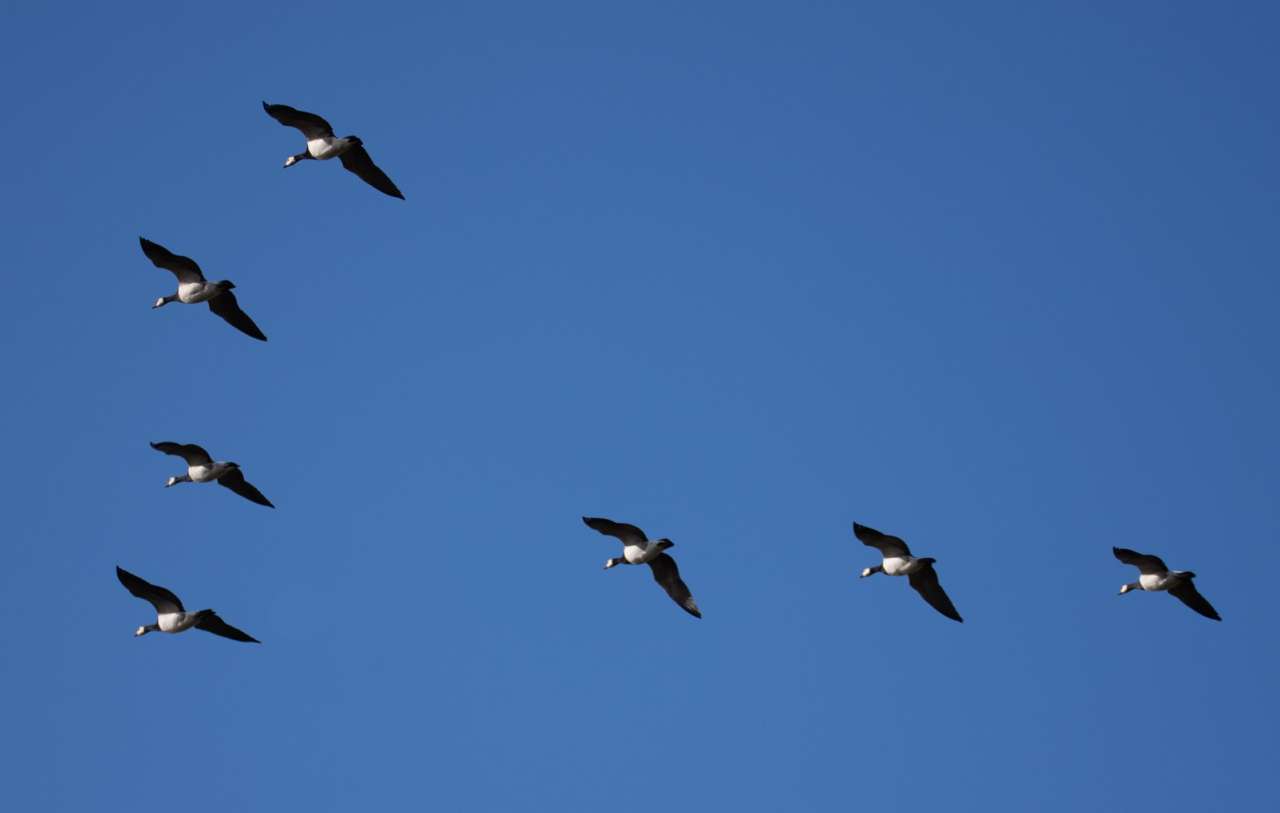Geese plow over the country

Photo: Morten Günther.
V-shaped formations of geese in flight are an impressive sight. But after the migrating geese have moved on, many farmers are left facing major grazing crop damage to their cultivated land.
Every spring, thousands of geese arrive to rear this year's brood of chicks, or rest on the ground before flying on to their final destination. Geese can be fascinating, but they also create challenges — not least for many farmers.
During their migration, geese stopover for a while in regular resting places and stay there for a few days or even several weeks. Some stay in the breeding areas for up to seven months. Jo Jorem Aarseth, researcher and head of NIBIO's department Natural Resources and Rural Development, has found that crop damage from grazing geese is an increasing problem in many parts of Norway.
A single goose can eat up to one kilo of grass each day. They forage a lot because the feed has a very short passage time through their digestive system, with most of the fibre coming straight out again. This also means that geese leave a lot of droppings behind, which in turn reduces the nutritional quality of the cultivated land.
When a flock of around 100 greylag geese land on a meadow at dawn, it may be several hours before the farmer notices them and chases them away. By then the geese may have caused significant damage. Hundreds of geese on a meadow also trample the grass, which may mean this grass could be left behind during the harvest. The geese can also carry and spread seeds from unwanted plants like cow parsley. All in all, the damage can reach levels where it is a substantial burden for the farm economy.
Many people are not aware of how good goose meat is. It is not without reason that the greylag goose has been dubbed "a cow on wings." Geese may themselves be vegetarians, but now NIBIO researchers are busy preparing a cookbook of goose meat recipes in a project headed by NINA and the Norwegian Farmers' Union.
Contacts

Contacts

